The Structural Performance of CFRP Composite Plates Assembled with Fiber Bragg Grating Sensors
Abstract
:1. Introduction
2. Fatigue Performance of Single-Layer CFRP Plate
2.1. Model Description
2.2. Theoretical Study
2.3. Analysis on the Calculated Results
3. Dynamic Analysis on Single-Layer CFRP Plate Attached with FBGs in Series
3.1. Testing Description
3.2. Discussion of the Results
3.3. Frequency Domain Analysis
4. Temperature and Strain Distribution of Bi-Layer CFRP Plate Assembled with FBGs during the Curing Process
4.1. Sensor Layout
4.2. Temperature and Strain Data Interpretation during the Curing Process
5. Conclusions
- (1)
- The time domain analysis indicates that the dynamic response of the CFRP plate can be accurately characterized by the surface-attached FBGs in series. The vibration profiles and the vibration energy dissipation of the CFRP plate can be interpreted by the FBGs in different positions.
- (2)
- The frequency domain analysis validates that the excitation frequency can be accurately reflected from the data measured by the FBGs in series. This conclusion can be further used to judge the damage identification of the CFRP plate.
- (3)
- The temperature and strain variation of the bilayer CFRP plate during the curing process can be clearly interpreted from the signal measured by the inserted FBGs in series and the FBGs without constraint. It means that the inserted FBGs in series have good sensing performance, and the function is similar with the surface-attached FBGs in series.
- (4)
- The heat during the curing process can induce much higher preliminary strain inside the center of the bilayer plate. How to ensure the temperature and strain are uniformly distributed during the curing process of the CFRP plates should be carefully considered.
Author Contributions
Funding
Institutional Review Board Statement
Informed Consent Statement
Data Availability Statement
Acknowledgments
Conflicts of Interest
References
- Diamanti, K.; Soutis, C. Structural health monitoring techniques for aircraft composite structures. Prog. Aerosp. Sci. 2010, 46, 342–352. [Google Scholar] [CrossRef]
- Zhao, X.; Gao, H.; Zhang, G.; Ayhan, B.; Yan, F.; Kwan, C.; Rose, J.L. Active health monitoring of an aircraft wing with embedded piezoelectric sensor/actuator network: I. Defect detection, localization and growth monitoring. Smart Mater. Struct. 2007, 16, 1208–1217. [Google Scholar] [CrossRef]
- Zhao, X.L.; Qian, T.; Mei, G.; Kwan, C.; Zane, R.; Walsh, C. Active health monitoring of an aircraft wing with embedded piezoelectric sensor/actuator network: II. Wireless approaches. Smart Mater. Struct. 2007, 16, 1218–1225. [Google Scholar] [CrossRef]
- Sante, D.R. Fibre optic sensors for structural health monitoring of aircraft composite structures: Recent advances and applications. Sensors 2015, 15, 18666–18713. [Google Scholar] [CrossRef]
- García, I.; Zubia, J.; Durana, G.; Aldabaldetreku, G.; Illarramendi, M.A.; Villatoro, J. Optical Fiber Sensors for Aircraft Structural Health Monitoring. Sensors 2015, 15, 15494–15519. [Google Scholar] [CrossRef] [PubMed] [Green Version]
- Ou, J.P.; Li, H. Structural Health Monitoring in mainland China: Review and Future Trends. Struct. Health Monit. 2010, 9, 219–231. [Google Scholar] [CrossRef]
- An, Y.H.; Ou, J.P. Experimental and numerical studies on model updating method of damage severity identification utilizing four cost functions. Struct. Control. Health Monit. 2011, 20, 107–120. [Google Scholar] [CrossRef]
- Wang, H.P.; Xiang, P.; Li, X. Theoretical Analysis on Strain Transfer Error of FBG Sensors Attached on Steel Structures Subjected to Fatigue Load. Strain 2016, 52, 522–530. [Google Scholar] [CrossRef]
- Wada, D.; Igawa, H.; Tamayama, M.; Kasai, T.; Arizono, H.; Murayama, H.; Isoda, N.; Katsuta, M. Fiber-optic simultaneous distributed monitoring of strain and temperature for an aircraft wing during flight. Appl. Opt. 2018, 57, 10458–10465. [Google Scholar] [CrossRef] [PubMed]
- Zhao, H.-T.; Wang, Q.-B.; Qiu, Y.; Chen, J.-A.; Wang, Y.-Y.; Fan, Z.-M. Strain transfer of surface-bonded fiber Bragg grating sensors for airship envelope structural health monitoring. J. Zhejiang Univ. A 2012, 13, 538–545. [Google Scholar] [CrossRef]
- Wang, H.P.; Dai, J.G. Strain transfer analysis of fiber Bragg grating sensor assembled composite structures subjected to thermal loading. Compos. Part B Eng. 2019, 162, 303–313. [Google Scholar] [CrossRef]
- Wang, H.P.; Xiang, P.; Jiang, L.Z. Strain transfer theory of industrialized optical fiber-based sensors in civil engineering: A review on measurement accuracy, design and calibration. Sens. Actuators A Phys. 2019, 285, 414–426. [Google Scholar] [CrossRef]
- Huang, N.; Shi, G.L. The significance of vertical moisture diffusion on drifting snow sublimation near snow surface. Cryosphere 2017, 11, 3011–3021. [Google Scholar] [CrossRef] [Green Version]
- Wang, J.Q.; Liu, X.J.; Zhou, Y.H. A high-order accurate wavelet method for solving Schrodinger equations with general nonlinearity. Appl. Math. Mech. 2018, 39, 275–290. [Google Scholar] [CrossRef]
- Baker, A.; Rajic, N.; Davis, C. Towards a practical structural health monitoring technology for patched cracks in aircraft structure. Compos. Part A 2009, 40, 1340–1352. [Google Scholar] [CrossRef]
- Wada, D.; Igawa, H.; Tamayama, M.; Kasai, T.; Arizono, H.; Murayama, H. Flight demonstration of aircraft wing monitoring using optical fiber distributed sensing system. Smart Mater. Struct. 2019, 28, 055007. [Google Scholar] [CrossRef]
- Wang, H.P.; Jiang, L.Z.; Xiang, P. Improving the durability of the optical fiber sensor based on strain transfer analysis. Opt. Fiber Technol. 2018, 42, 97–104. [Google Scholar] [CrossRef]
- Zhang, Y.Z.; Anderson, N.; Bland, S. All-printed strain sensors: Building blocks of the aircraft structural health monitoring system. Sens. Actuators A Phys. 2017, 253, 165–172. [Google Scholar] [CrossRef] [Green Version]
- Higuchi, R.; Okabe, T.; Yoshimura, A.; Tay, T.E. Progressive failure under high-velocity impact on composite laminates: Experiment and phenomenological mesomodeling. Eng. Fract. Mech. 2017, 178, 346–361. [Google Scholar] [CrossRef]
- Wang, H.P.; Ni, Y.Q.; Dai, J.G.; Yuan, M.D. Interfacial debonding detection of strengthened steel structures by using smart CFRP-FBG composites. Smart Mater. Struct. 2019, 28, 115001. [Google Scholar] [CrossRef]
- Junior, P.; Silva, A.G.M.D.; Oliveira, D. CFRP laminate as punching shear reinforcement. Eng. Struct. 2021, 237, 112072. [Google Scholar] [CrossRef]
- Backe, S.; Balle, F.; Hannemann, B.; Schmeer, S.; Breuer, U.P. Fatigue properties of multifunctional metal-and carbon-fibre-reinforced polymers and intrinsic capabilities for damage monitoring. Fatigue Fract. Eng. Mater. Struct. 2019, 42, 143–151. [Google Scholar] [CrossRef] [Green Version]
- Yu, F.M.; Okabe, Y. Linear damage localization in CFRP laminates using one single fiber-optic Bragg grating acoustic emission sensor. Compos. Struct. 2020, 238, 111992. [Google Scholar] [CrossRef]
- Robin, J.; Victor, G. Towards the generation of controlled one-inch impact damage in thick CFRP composites for SHM and NDE validation. Compos. Part B Eng. 2020, 203, 108463. [Google Scholar]
- Cao, H.Y.; Jiang, M.S.; Jia, L.; Ma, M.Y.; Sun, L.; Zhang, L.; Tian, A.Q.; Liang, J.Y. An ultrasonic signal processing method to improve defect depth estimation in composites based on empirical mode decomposition. Meas. Sci. Technol. 2021, 32, 115112. [Google Scholar] [CrossRef]
- Sánchez-Romate, X.F.; García, C.; Rams, J.; Sánchez, M.; Ureña, A. Structural health monitoring of a CFRP structural bonded repair by using a carbon nanotube modified adhesive film. Compos. Struct. 2021, 270, 114091. [Google Scholar] [CrossRef]
- Ni, Q.Q.; Hong, J.; Xu, P.; Xu, Z.Z.; Khvostunkov, K.; Xia, H. Damage detection of CFRP composites by electromagnetic wave nondestructive testing (EMW-NDT). Compos. Sci. Technol. 2021, 210, 108839. [Google Scholar] [CrossRef]
- Yang, X.Y.; Verboven, E.; Ju, B.F.; Kersemans, M. Comparative study of ultrasonic techniques for reconstructing the multilayer structure of composites. NDT&E Int. 2021, 121, 102460. [Google Scholar]
- Wang, H.P.; Song, T.; Yan, J.W.; Xiang, P.; Feng, S.Y.; Hui, D. Improved analytical method for interfacial-slip control design of steel-concrete composite structures. Symmetry 2021, 13, 1225. [Google Scholar] [CrossRef]
- Stephen, P.T.; Woinowsky-Krieger, S. Theory of Plates and Shells, 2nd ed.; McGraw Hill India: New York, NY, USA, 2010. [Google Scholar]
- Ermakov, V.N.; Kruchinin, S.P.; Fujiwara, A. Electronic nanosensors based on nanotransistor with bistability behaviour. In NATO ARW Electron Transport in Nanosystems; Bonca, J., Kruchinin, S.P., Eds.; Springer: Berlin/Heidelberg, Germany, 2008; pp. 341–349. [Google Scholar]
- Repetsky, S.P.; Vyshyvana, I.G.; Nakazawa, Y.; Kruchinin, S.P.; Bellucci, S. Electron transport in carbon nanotubes with adsorbed chromium impurities. Materials 2019, 12, 524. [Google Scholar] [CrossRef] [Green Version]
- Wang, H.P.; Dai, J.G.; Wang, X.Z. Improved temperature compensation of fiber Bragg grating-based sensors applied to structures under different loading conditions. Opt. Fiber Technol. 2021, 63, 102506. [Google Scholar] [CrossRef]
- Wang, H.P.; Jiang, L.Z.; Xiang, P. Priority design parameters of industrialized optical fiber sensors in civil engineering. Opt. Laser Technol. 2018, 100, 119–128. [Google Scholar] [CrossRef]



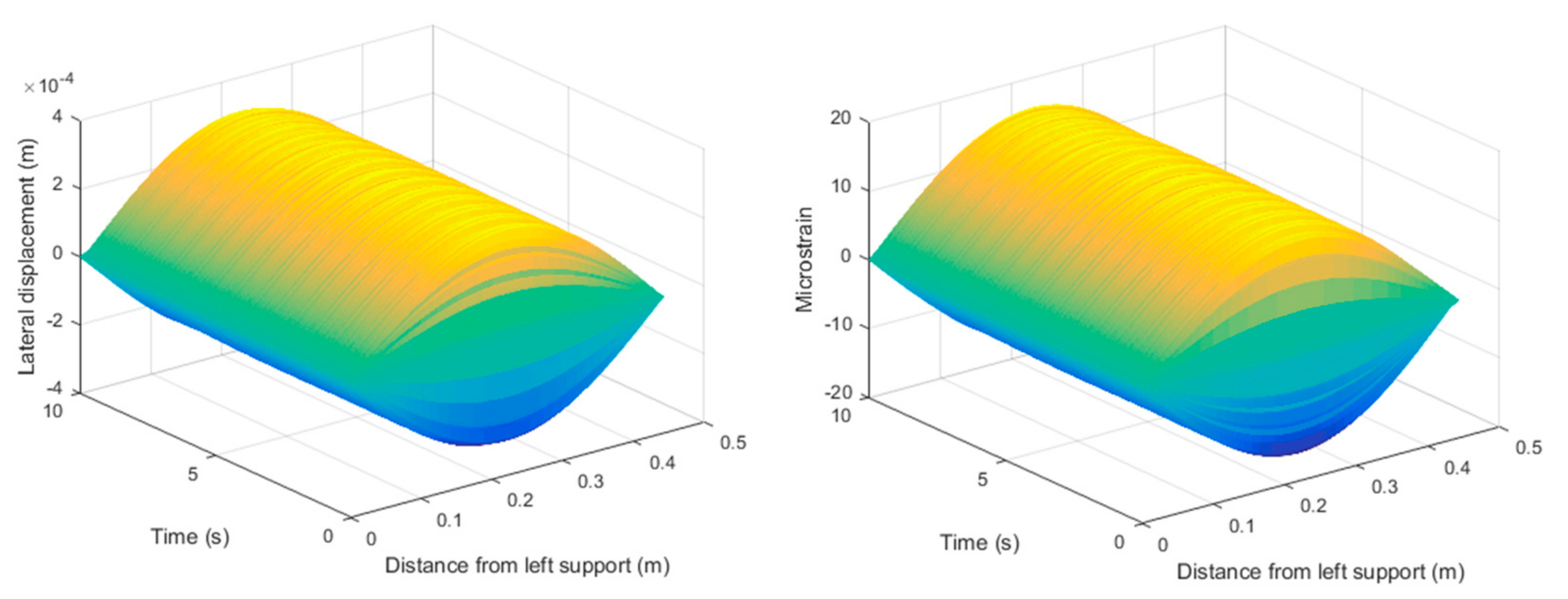
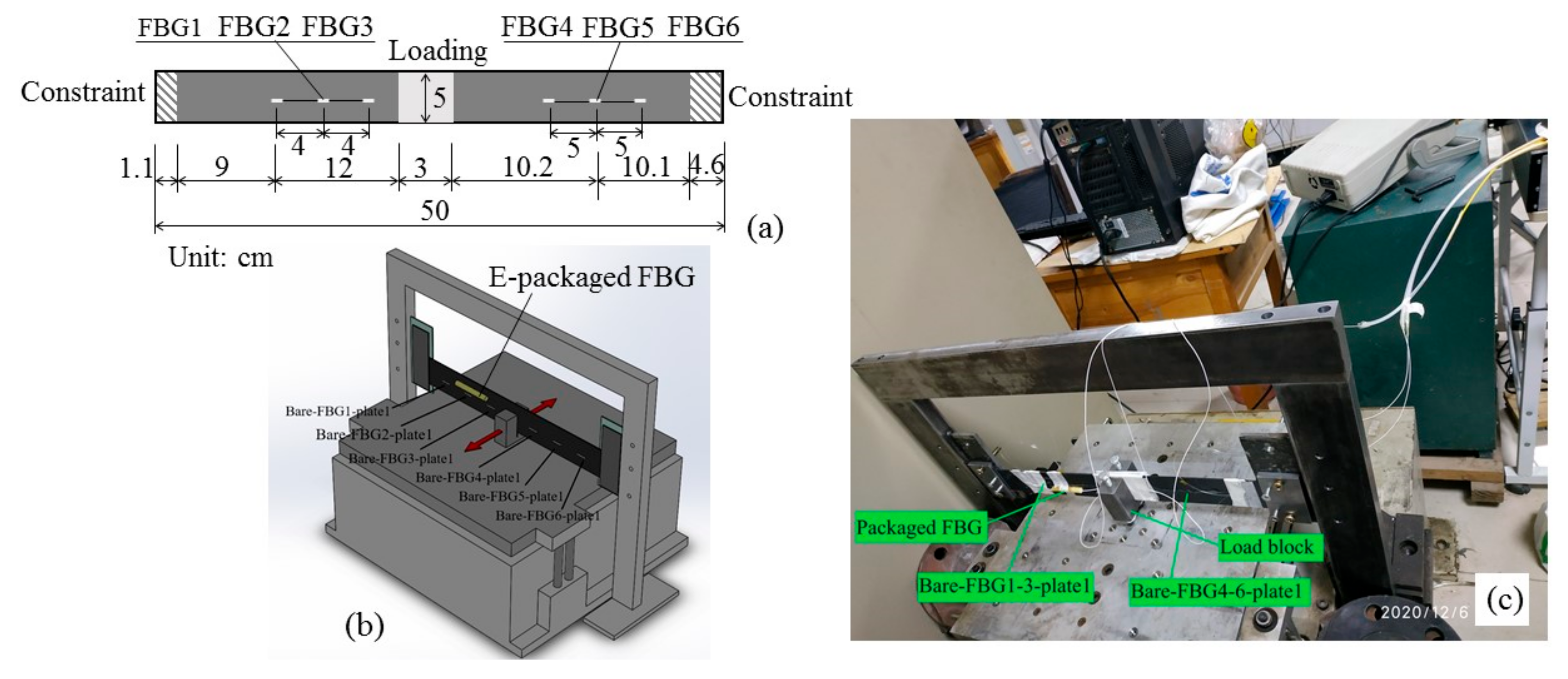
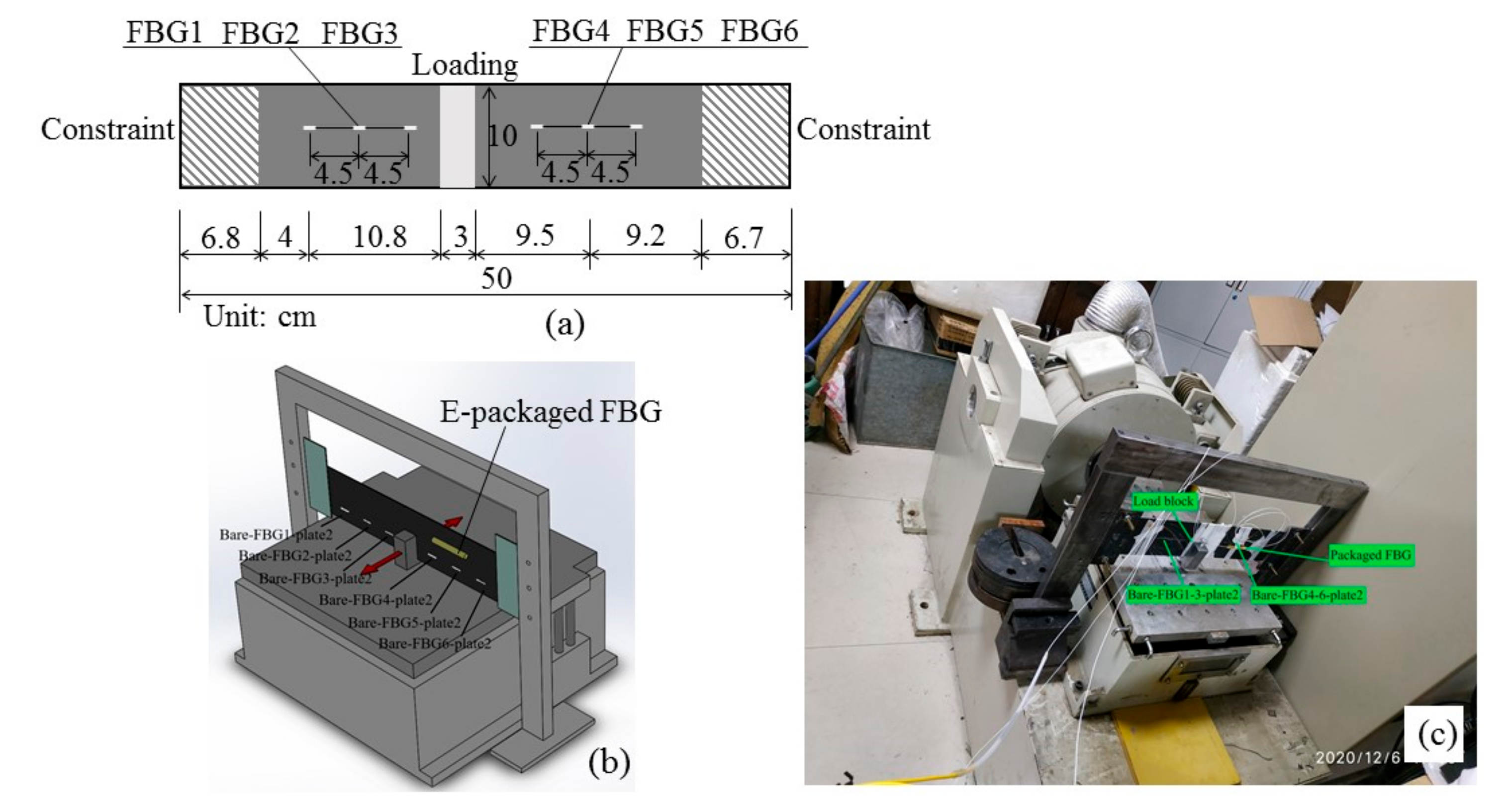
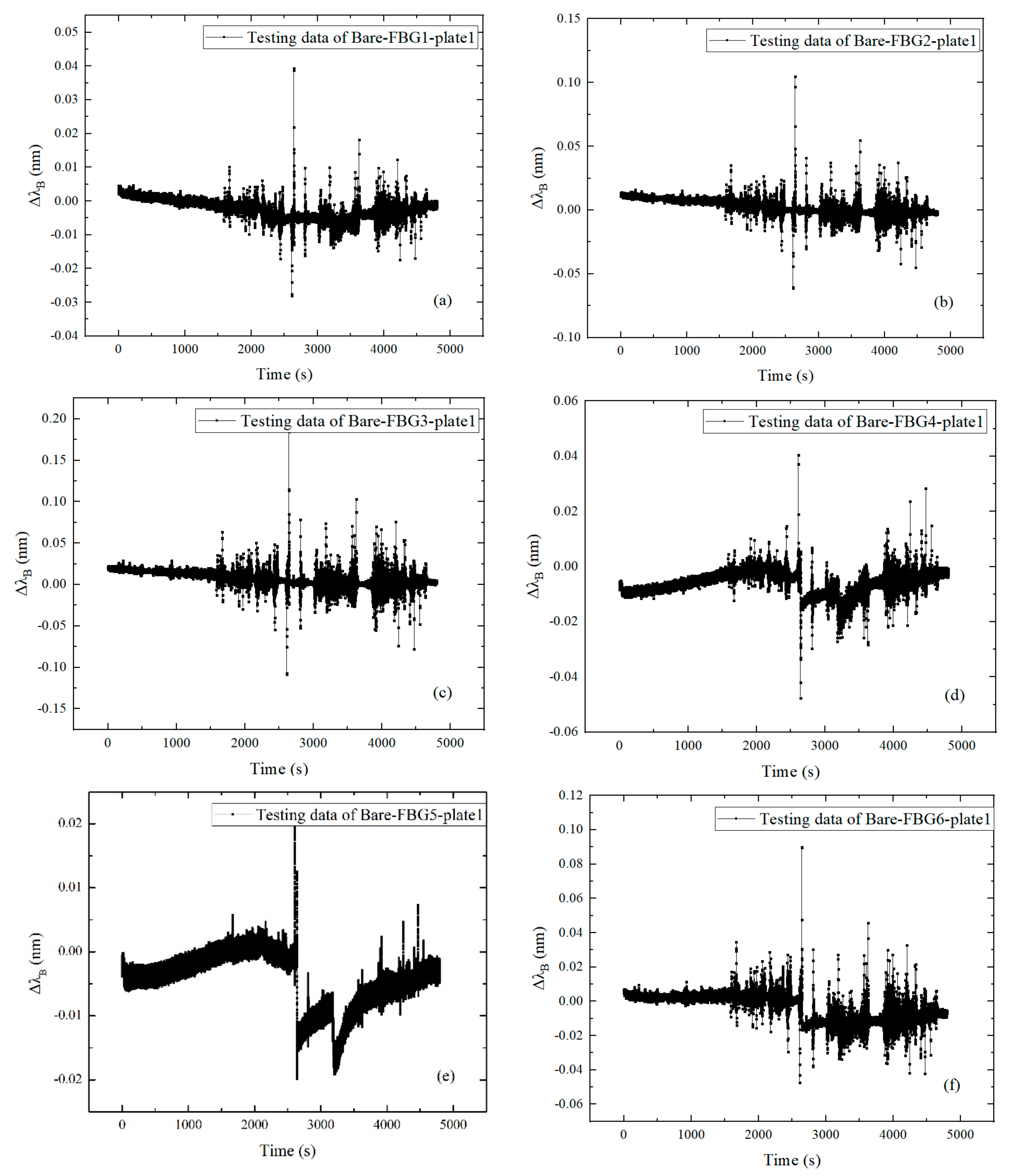
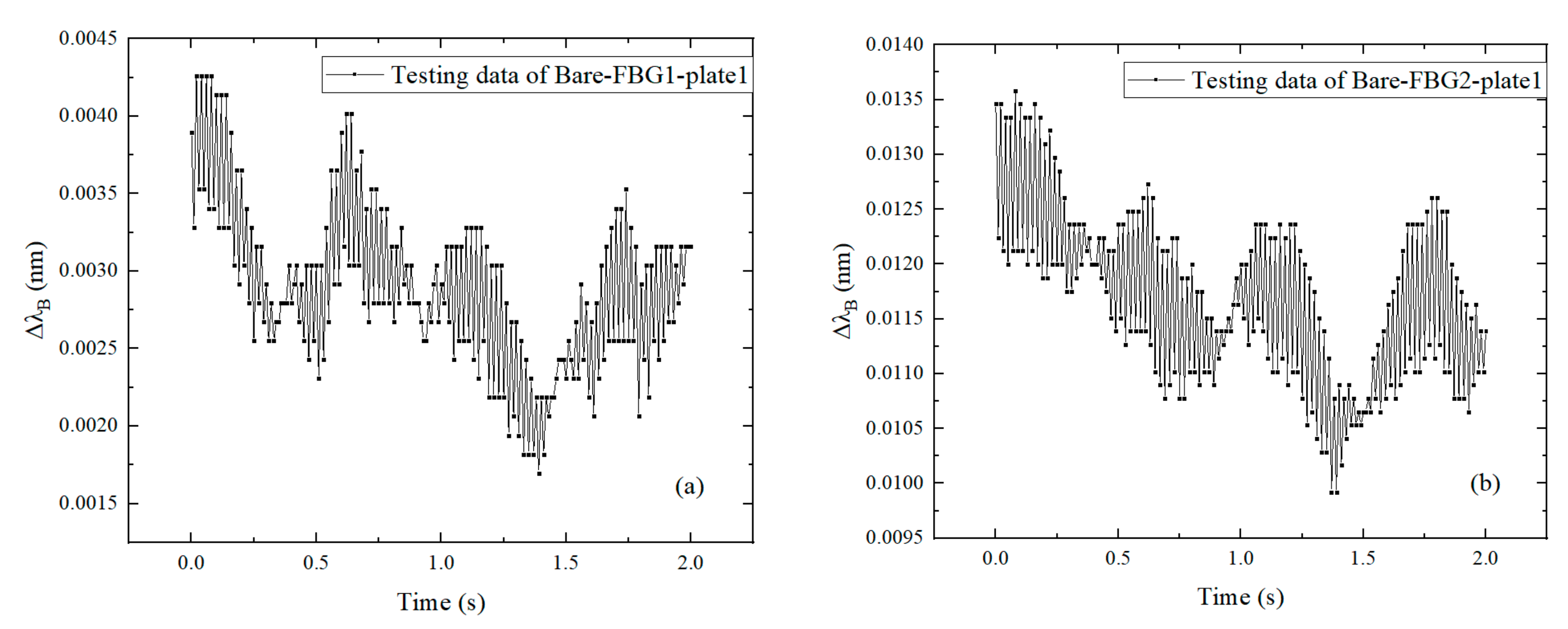
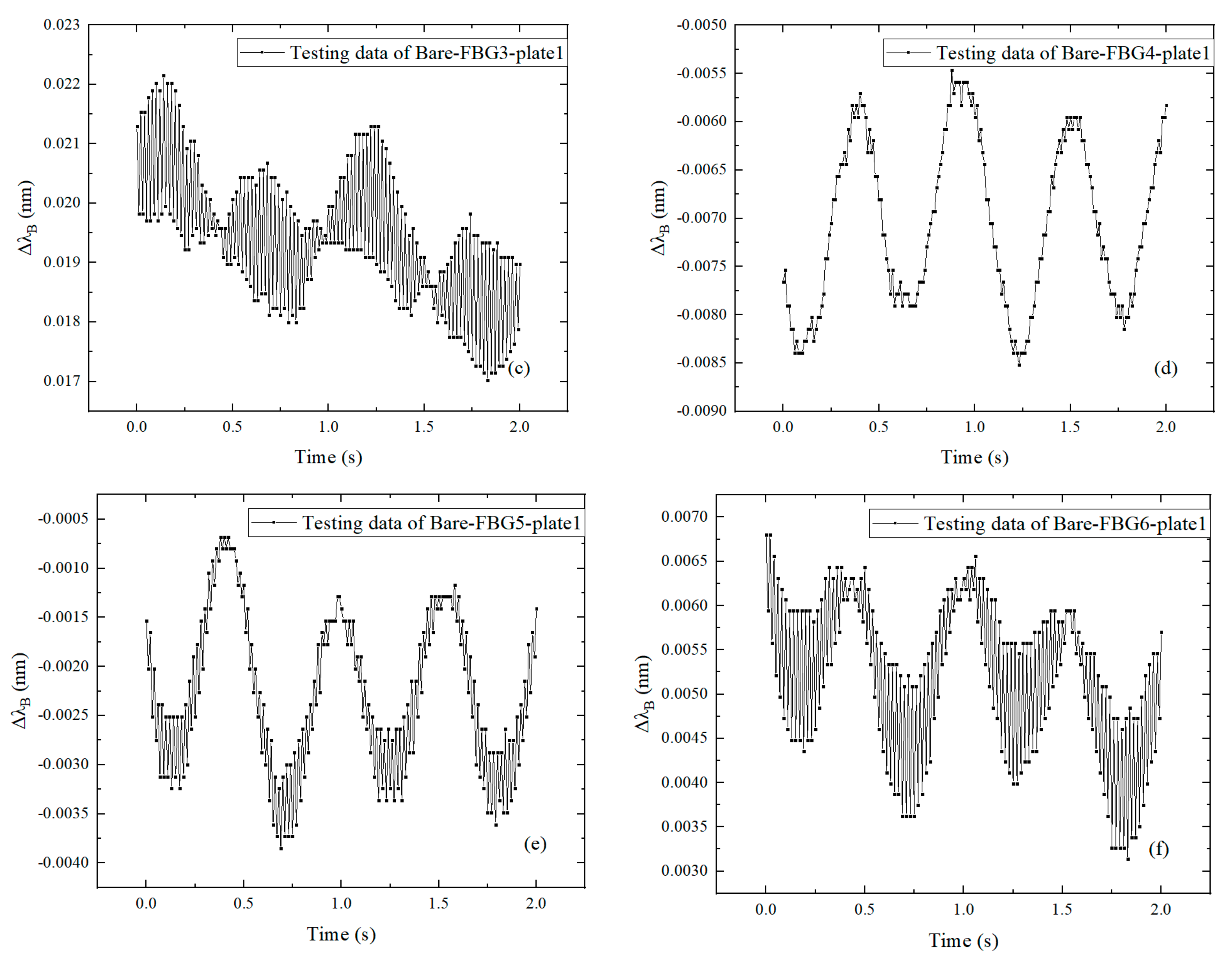
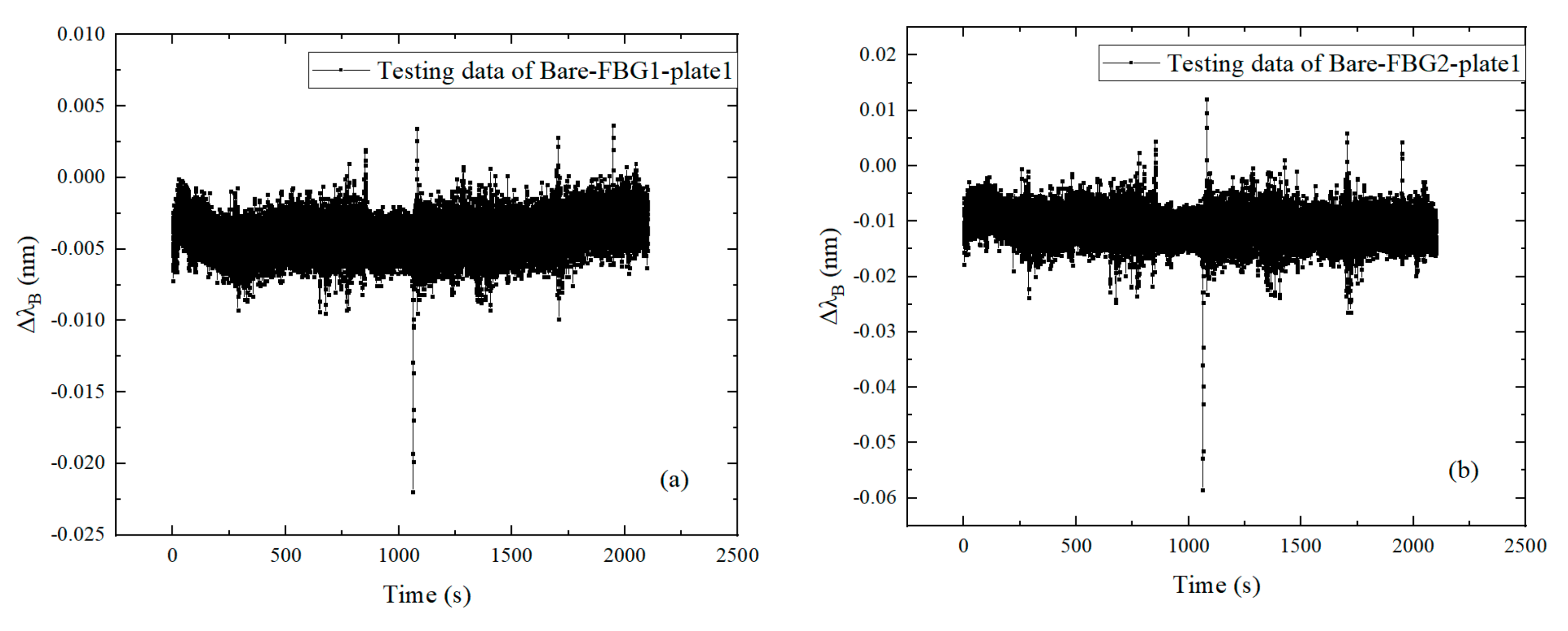
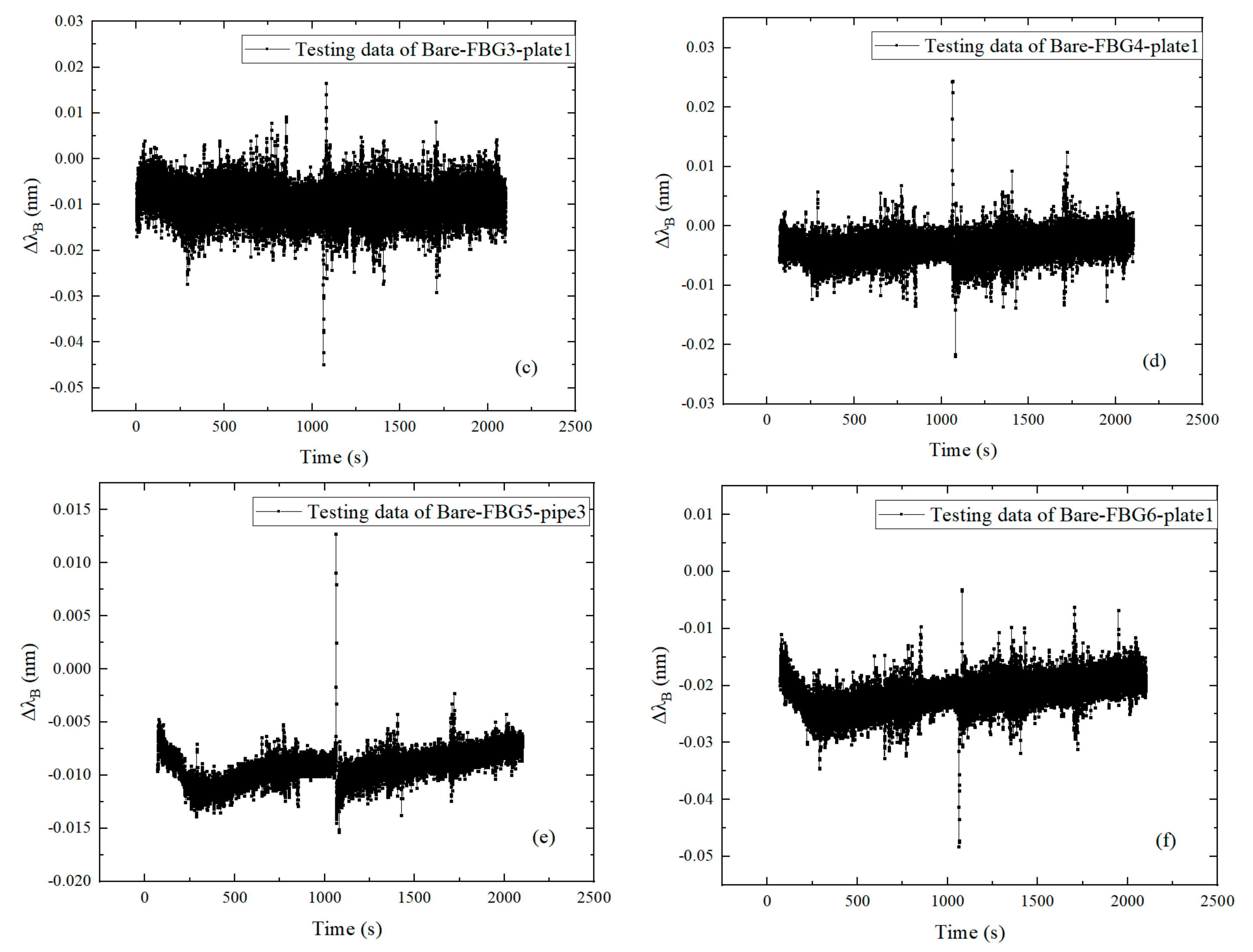
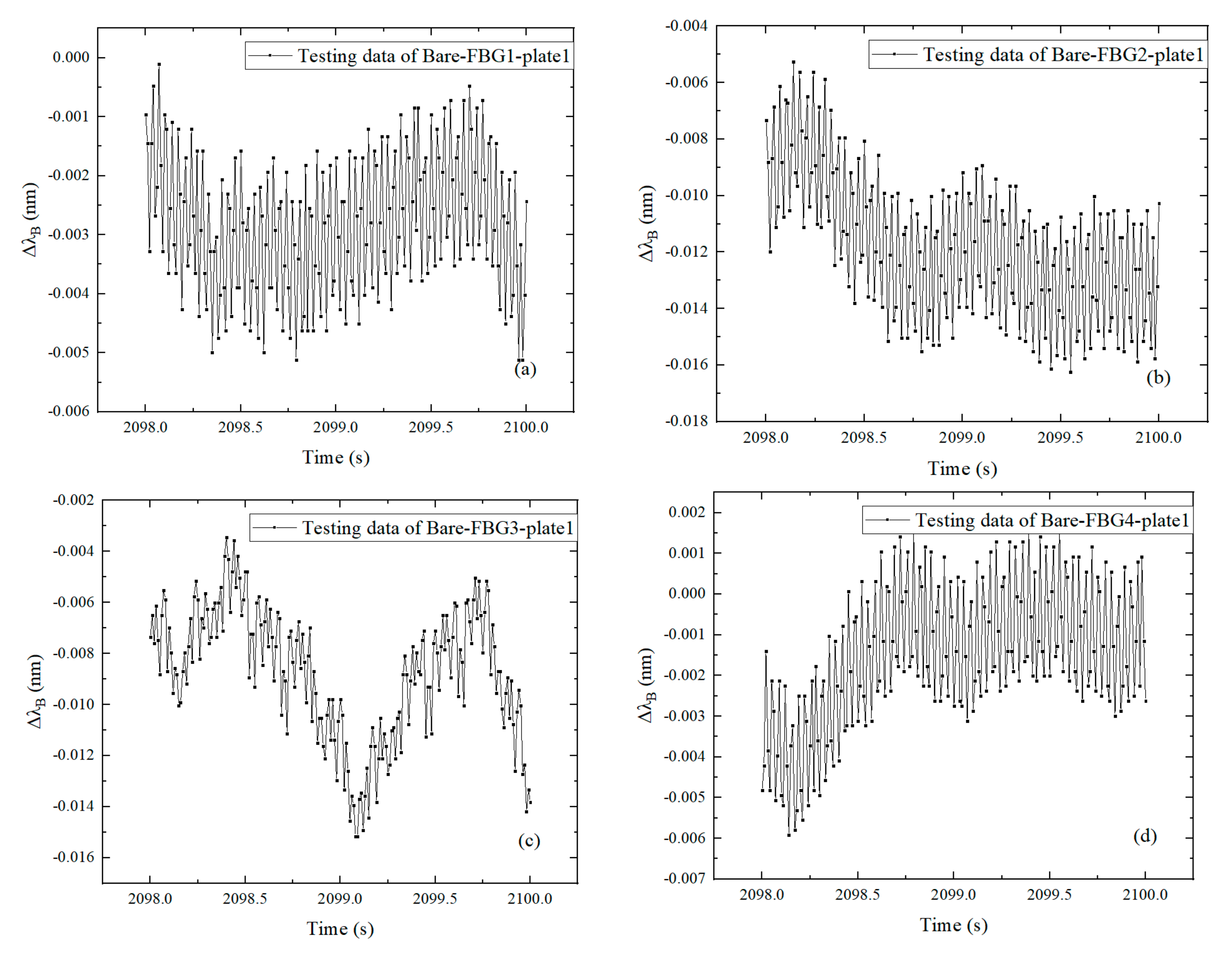

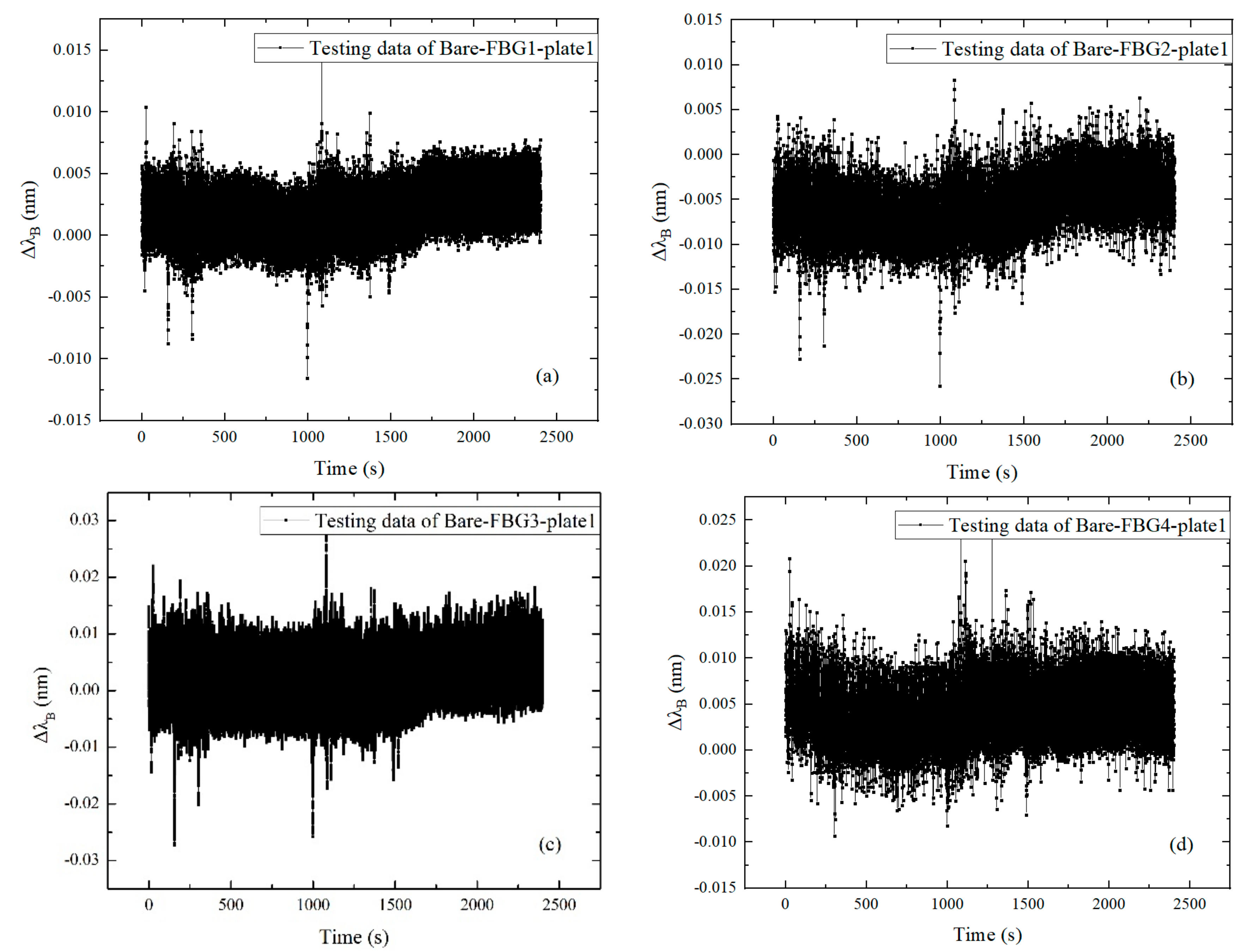

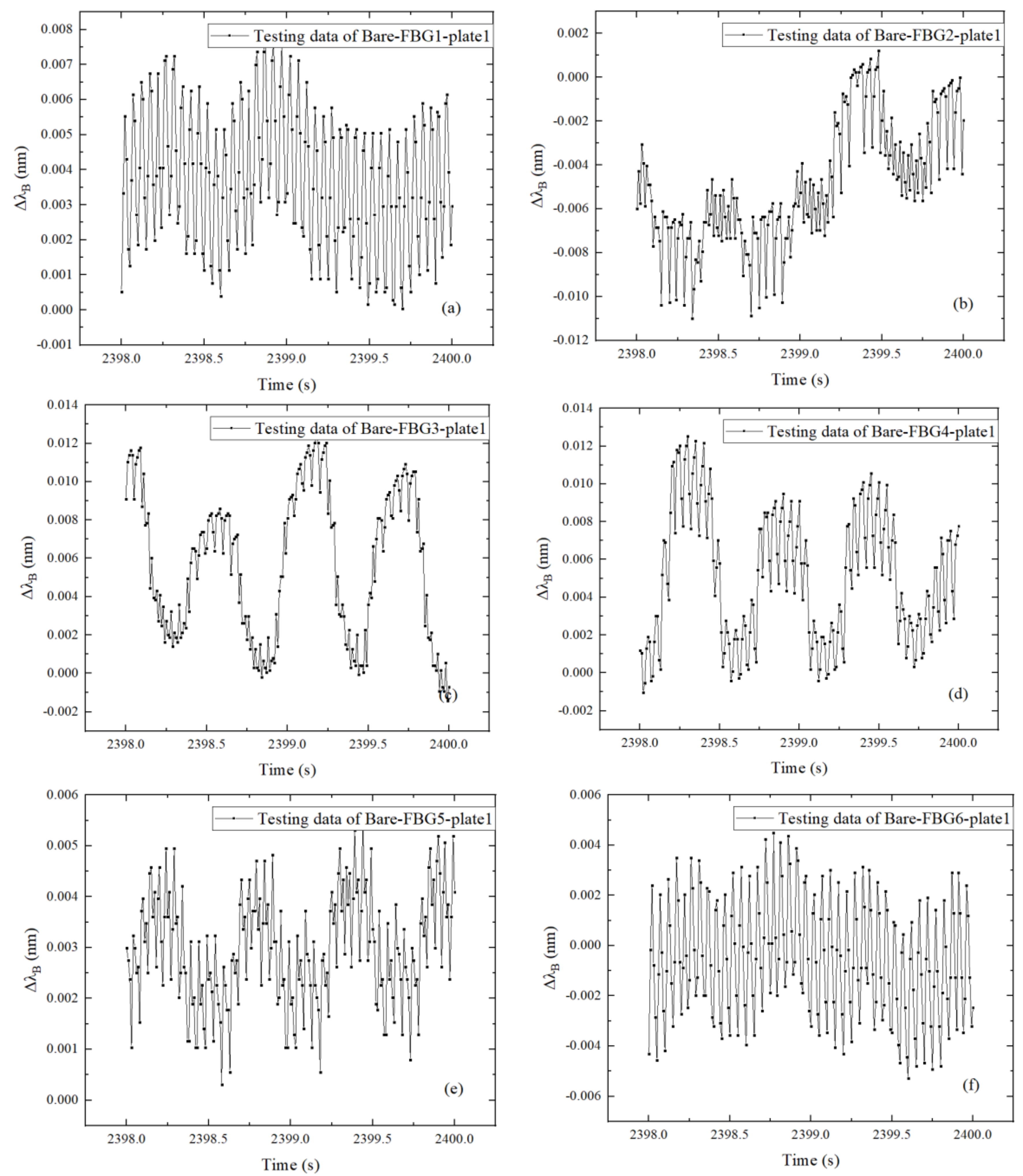


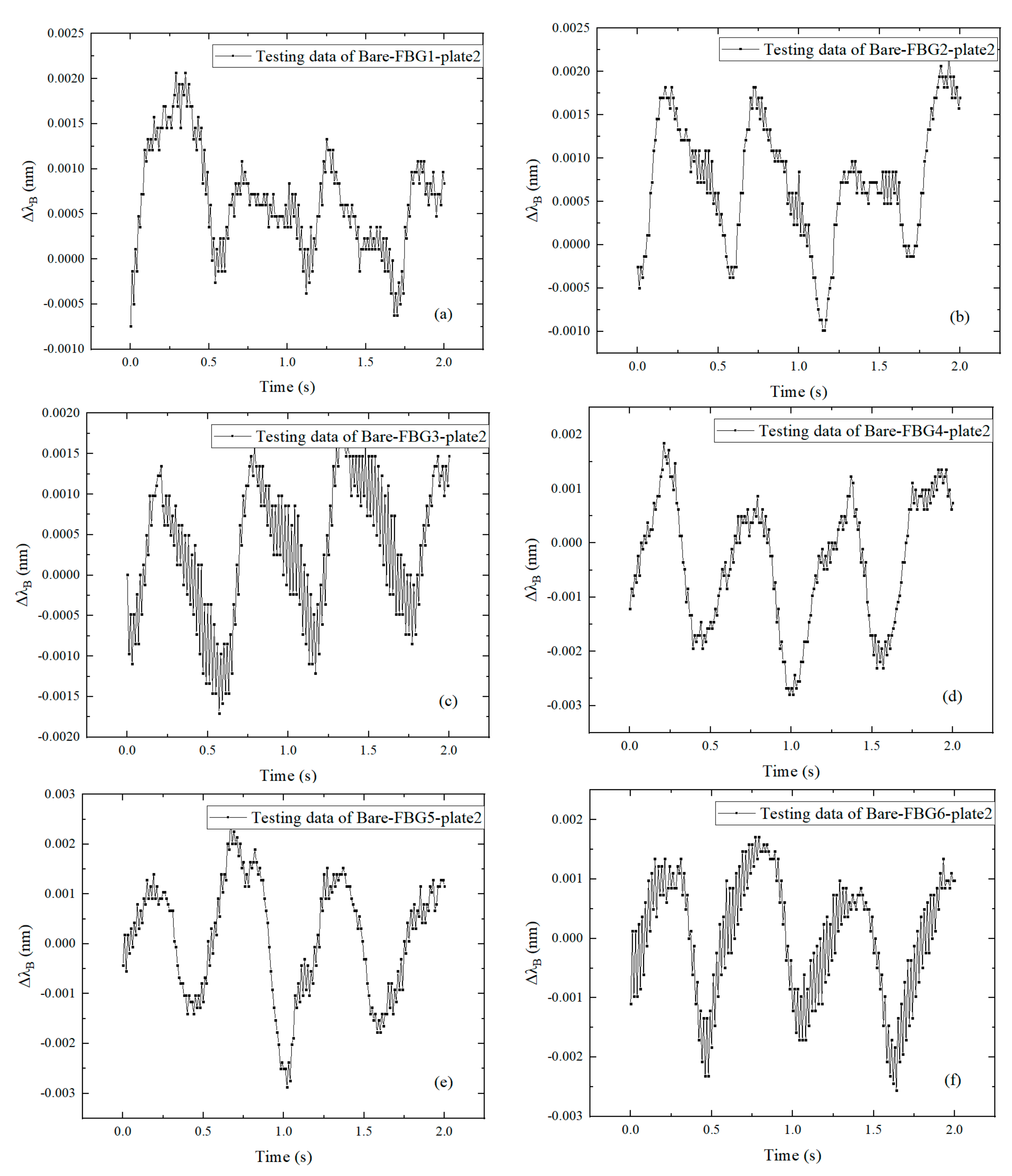





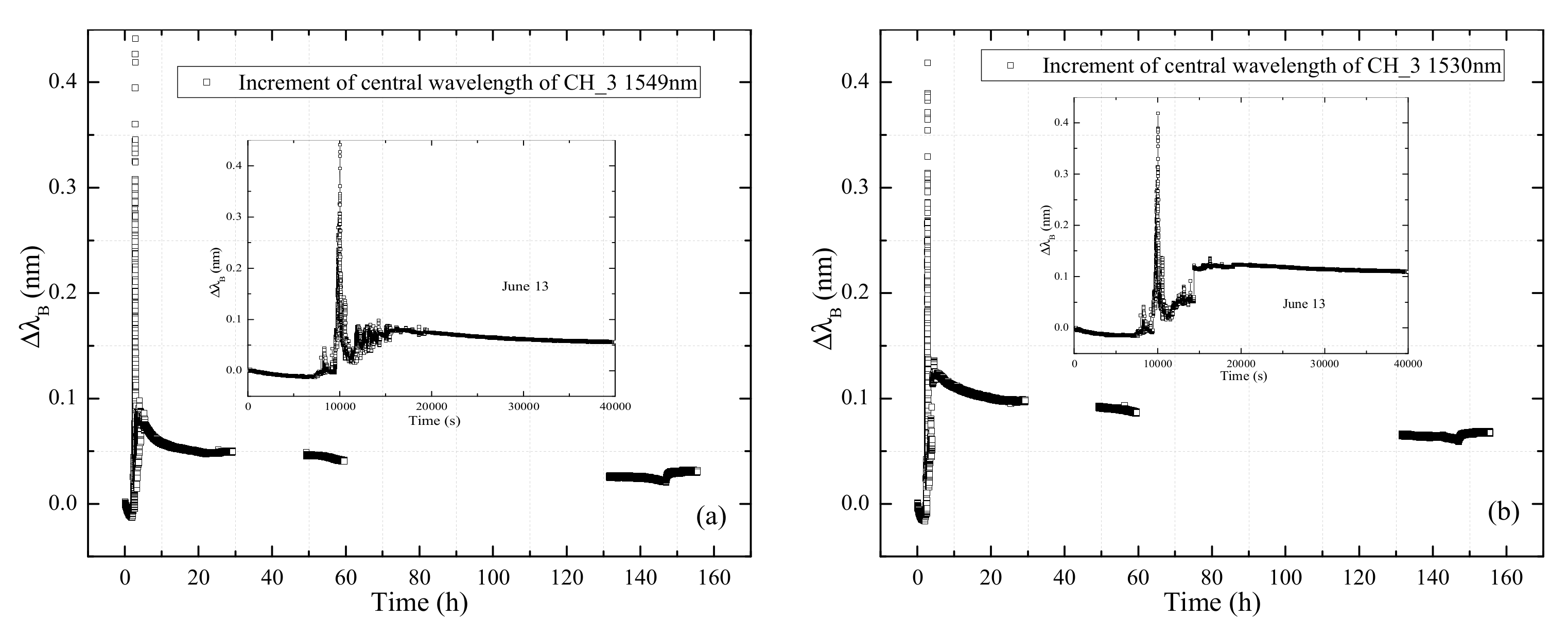
Publisher’s Note: MDPI stays neutral with regard to jurisdictional claims in published maps and institutional affiliations. |
© 2021 by the authors. Licensee MDPI, Basel, Switzerland. This article is an open access article distributed under the terms and conditions of the Creative Commons Attribution (CC BY) license (https://creativecommons.org/licenses/by/4.0/).
Share and Cite
Wang, H.-P.; Chen, H.; Chen, C.; Zhang, H.-Y.; Jiang, H.; Song, T.; Feng, S.-Y. The Structural Performance of CFRP Composite Plates Assembled with Fiber Bragg Grating Sensors. Symmetry 2021, 13, 1631. https://doi.org/10.3390/sym13091631
Wang H-P, Chen H, Chen C, Zhang H-Y, Jiang H, Song T, Feng S-Y. The Structural Performance of CFRP Composite Plates Assembled with Fiber Bragg Grating Sensors. Symmetry. 2021; 13(9):1631. https://doi.org/10.3390/sym13091631
Chicago/Turabian StyleWang, Hua-Ping, Hao Chen, Cong Chen, Hu-Yuan Zhang, Hao Jiang, Tao Song, and Si-Yuan Feng. 2021. "The Structural Performance of CFRP Composite Plates Assembled with Fiber Bragg Grating Sensors" Symmetry 13, no. 9: 1631. https://doi.org/10.3390/sym13091631






